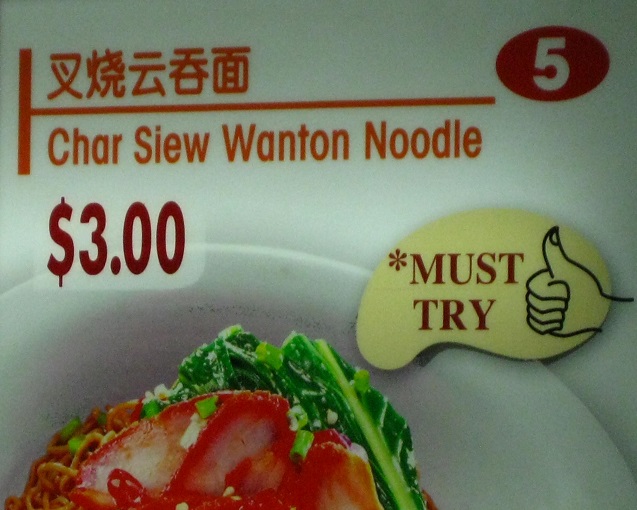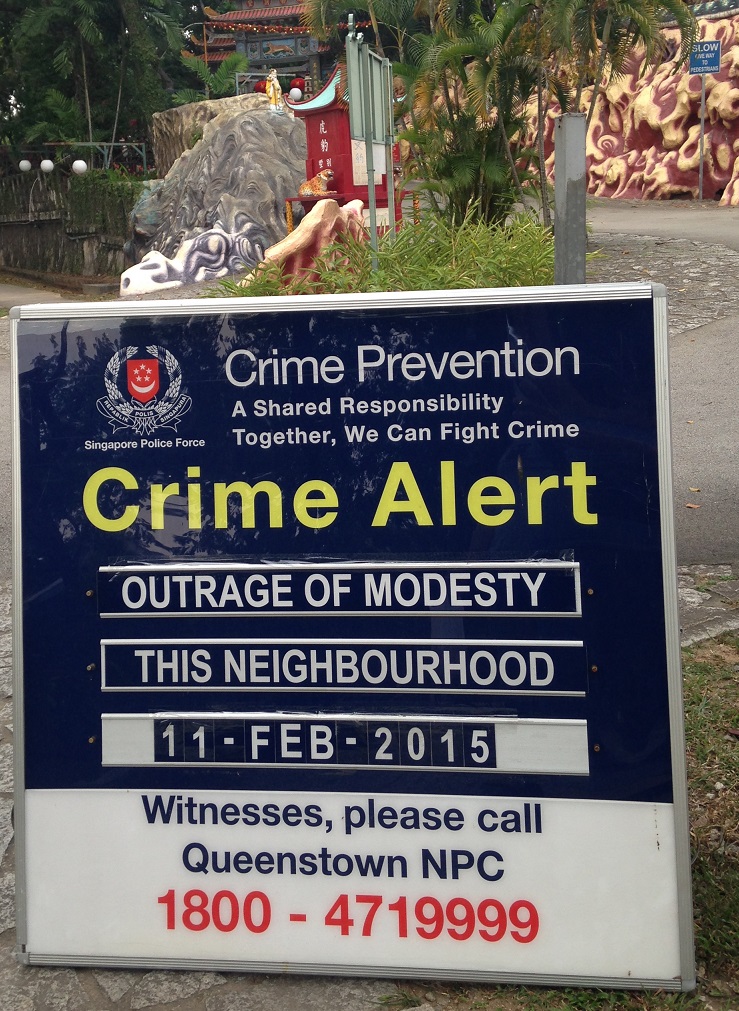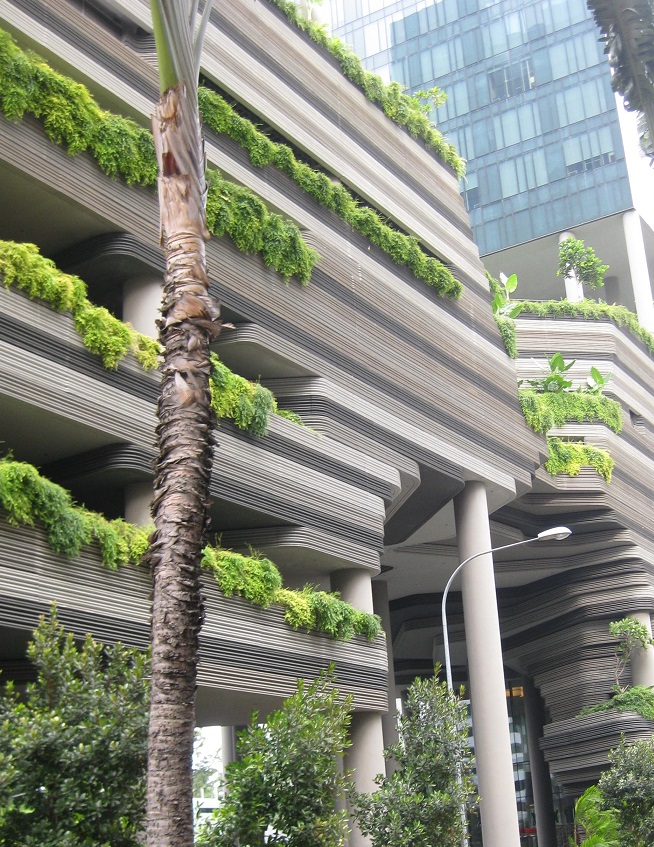Here is what surprised us most about Singapore:
Food:
- There are Hawker Centres, which are like a cross between a giant market and a food court. They have many food options there, along with produce, toiletries, decorations, and even things like farm equipment. We bought everything from a pair of shoes to a toothbrush at one near our house. For food, the prices here are much cheaper than any other eating establishment in the country.
- A lot of food places (of various cuisines) say ‘No Pork. No Lard.’ – because this is what Halal dietary restrictions require.

- In the US, we write ‘wonton noodles,’ but here, they write ‘wanton noodles.’ Every time I see it, all I can imagine is flirtatious or sex-obsessed noodles walking around. I have yet to order them.
- Either locals don’t know euphemisms for genitalia, or they like their cafes to be named after them. There is a café chain called ‘Heavenly Wang’ and a café near Haw Par Villa called ‘Hooha!’
- They have one of the largest varieties of food commonly available. It’s not like having 40 Malay restaurants in a city, but more like one quarter of city eateries serving Malay food. It gets further muddled because a lot of the cuisines have merged over the centuries, creating a ‘fusion’ cuisine.
Transit:
- The bus and subway system are great: clean, fast, and easy-to-follow. (The info I read said that you need to keep >$3 on your transit card at all times, so be aware. Also, it stops running between eleven something and a bit after midnight, depending on the stop.)
- The gas stations don’t show the prices – not just from the road, but in general. I think you have to be at the pump to see them!
- The local airport is pretty advanced, and pretty botanical. It has what looks like palm tree forests, inside baggage claim and the terminals. It’s not quite as fancy as Seoul’s airport, retail-wise, but it wins on nature and design.

- They have posters around town advising people on how to be considerate, especially on public transit. They give the obedient characters names like ‘Hush-Hush Hannah.’ Memorable, but a bit creepy.
- We didn’t see many people biking, and those who were tended to bike on the sidewalk.
- They drive and walk on the left, like in Britain. This is most notable to me on escalators, on which I sometimes forget to stand on the left.
Crime :
:
- When you read up on Singapore, guides tell you about all of the things you can get fined or arrested for. And while I wouldn’t go breaking the laws against drugs or pr0n, I’ve seen many a local jaywalk and litter. It’s illegal here like it is in the US: sure, they could enforce it, but they rarely seem to.
- Whenever a crime is committed, they put up a sign that says ‘Crime Alert,’ with the type of incident and date. Presumably, this is to find potential witnesses and deter future potential criminals. To us, it was more intriguing than anything else: ‘What kind of outrage of modesty could they be referring to?’
- In many cities of the US, sleeping on public benches is considered to be suspect behavior only done by ‘bums.’ Here, we’ve seen multiple people sleeping on benches around town, and no one considers this odd. These nappers are assumed to be fully functioning members of society who just got too tired from the Chinese New Year celebrations – not miscreants.
Buildings:
- The
 architecture in the city is very cool. Even the high rise apartment buildings are fun: different from one another, with unusual angles or colors or shapes. And the older, brightly-colored brownstones in the neighborhoods look comfortable. It’s more consistently visually interesting here than in any other city I can think of. My favorite building was the Park Royale (Hotel), which looks like a napoleon cake and has little paint vials too.
architecture in the city is very cool. Even the high rise apartment buildings are fun: different from one another, with unusual angles or colors or shapes. And the older, brightly-colored brownstones in the neighborhoods look comfortable. It’s more consistently visually interesting here than in any other city I can think of. My favorite building was the Park Royale (Hotel), which looks like a napoleon cake and has little paint vials too. - There are a lot of sculptures all around. They vary from works by Dali and Moore to random figures or geometric shapes.
- They have a bunch of pagodas now being used for other things, like business schools or charity organizations.
- When they get engaged, local couples apply for a government-provided apartment to move into. (80% of locals live in this type of housing.) This process takes three to five years, which is less than in Sweden, but the Swedes start at birth. I asked the lady who told me about it whether people chose long engagements or whether they got married and shacked up with one set of folks: she said that many wait. Now, that is a long engagement.
Other:
- Many countries have English writing on signs or locals who speak a lot of English, but here, English is the first language. Signs also have Malay, Mandarin, and Tamil, but the primary language of communication is English. We didn’t quite expect that.
- Chinese New Year is a big deal here. There were lanterns absolutely everywhere, including places completely unrelated to religion or even Chinese culture. And on the day itself, many people (not just of Chinese origin) were wearing red or hot pink, the lucky color. A guide we read suggested that locals (even those who are Malay, Indian, etc.) celebrate in solidarity.
- In Little India, we saw many, many people queuing at ATMs and mobile phone stores. In much of the rest of the city, we saw them queuing at betting places like ‘Singapore Pools.’
- Prices for everything vary widely around town. You can pay more for food or clothing than you would at a fancy place in the US, or you can grab a t-shirt or a meal for $2. Price segmentation in action.
- As in Cambodia, almost all kids wear school uniforms. However, Cambodian kids all wear the same one, while Singaporean schools each have very different ones – from all-turquoise shirts and skorts to black and white dotted skirts with dark green shirts.
- As in Europe, almost all bras sold are padded. Not lightly padded, but heavily padded.



Pingback: Where We Stayed in Singapore - Novelty Buffs
Pingback: Our Favorite Modern Art Museum - Novelty Buffs
Pingback: Surprising Things About Bangkok - Novelty Buffs